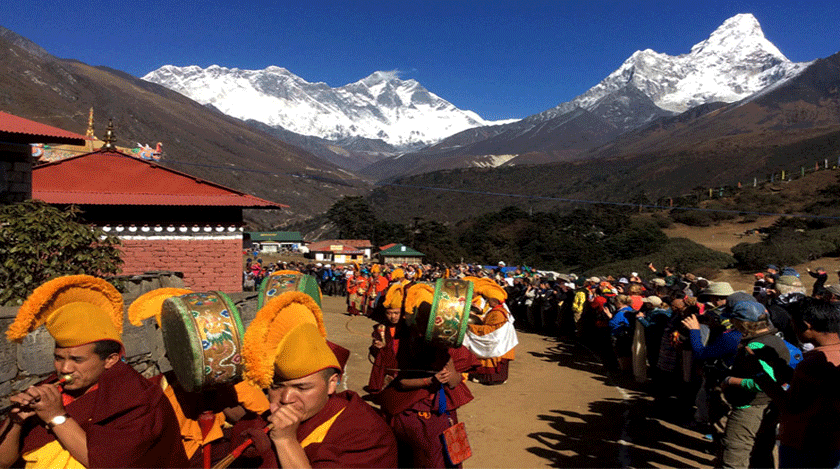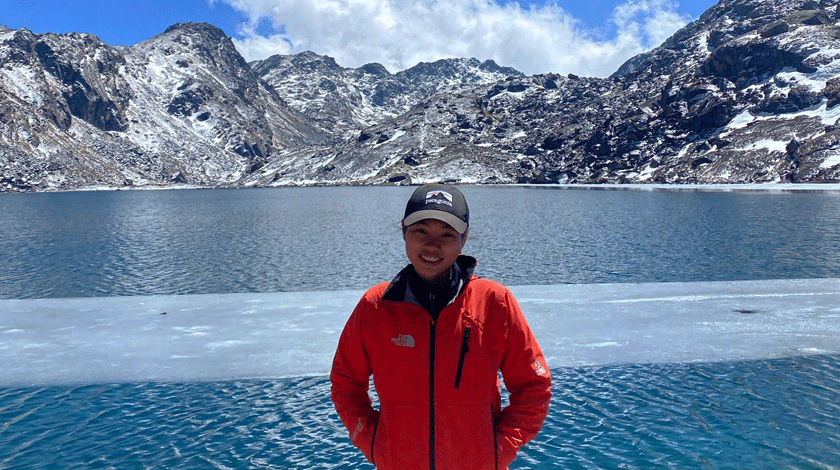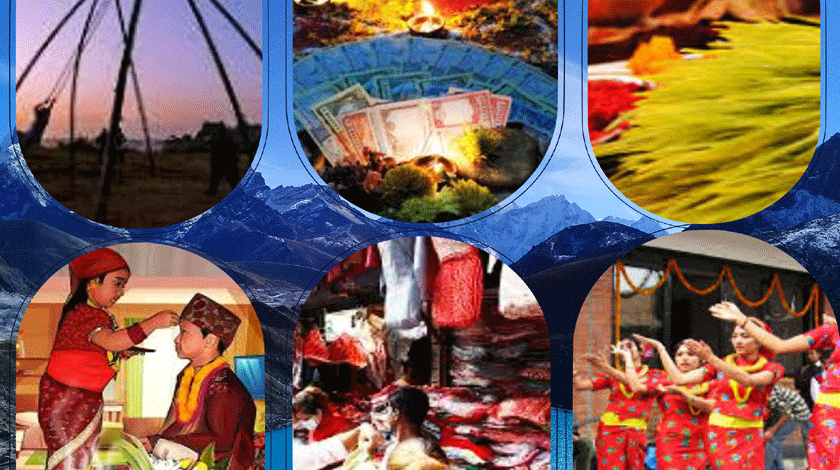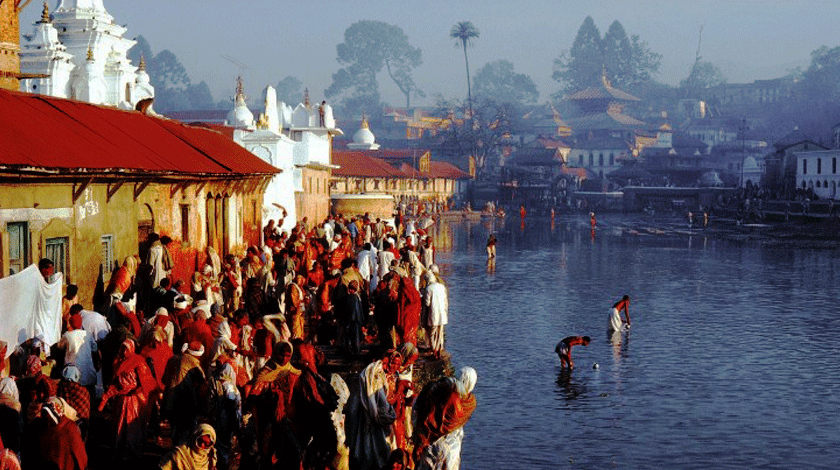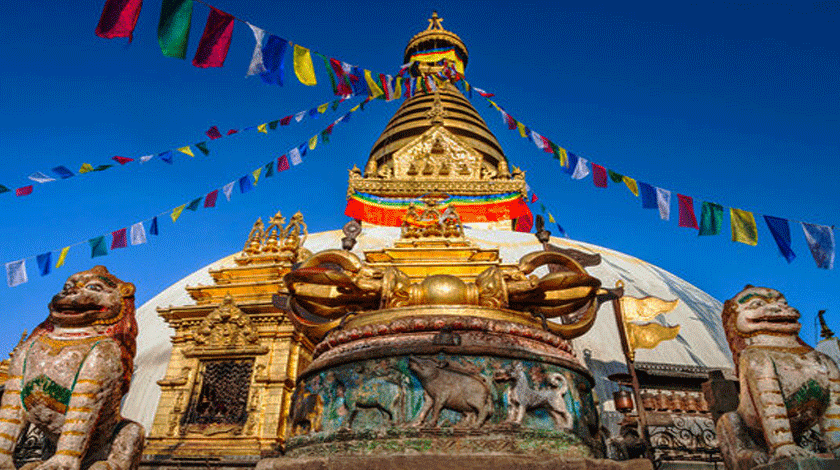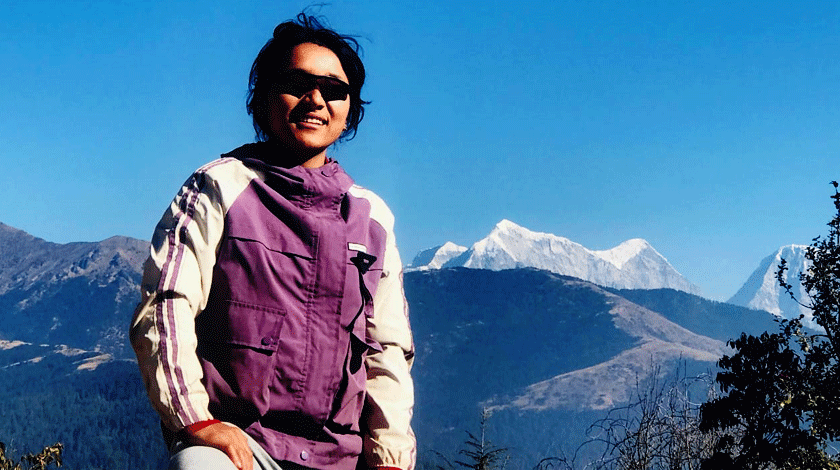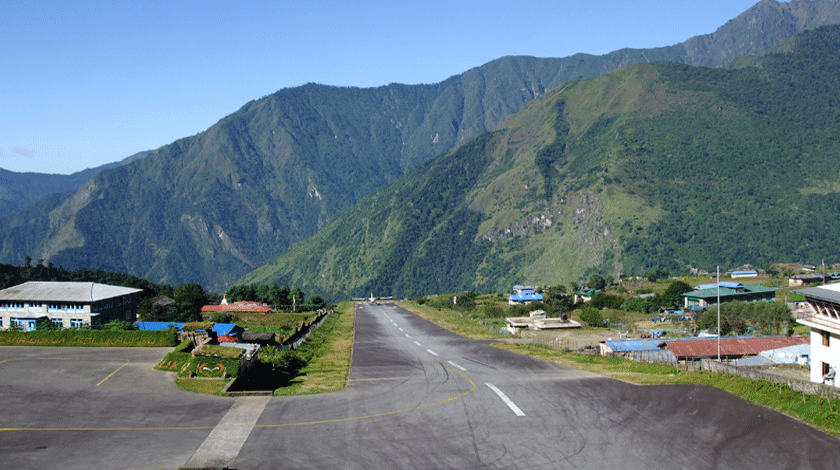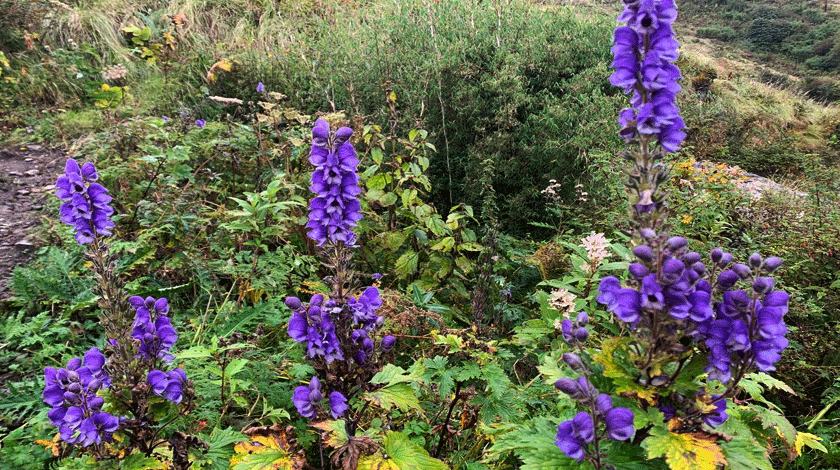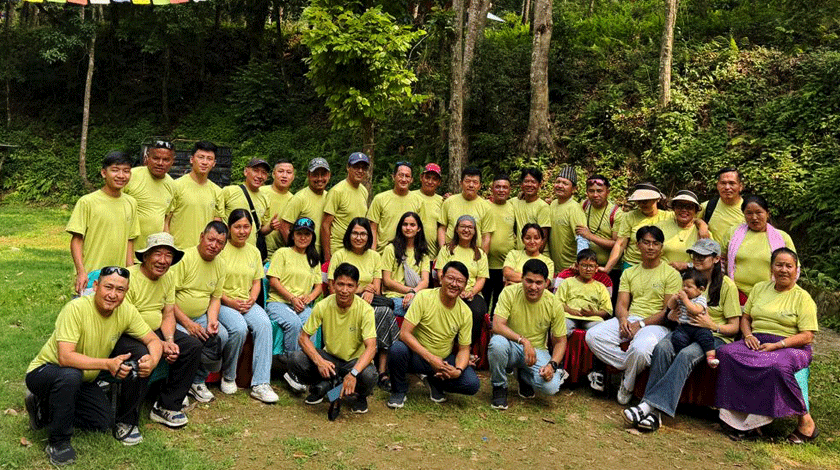Boudhanath Stupa
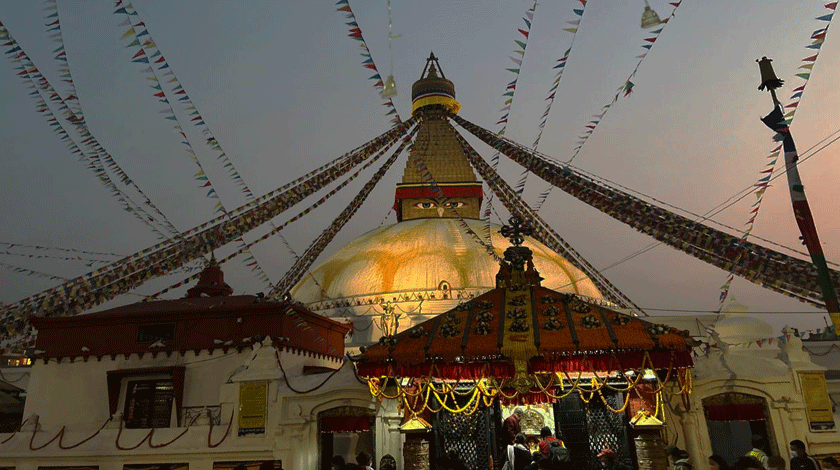
Boudhanath Stupa –The Largest Stupa in Nepal
Boudhanath Stupa, also known as Boudha Stupa, is one of the most significant Buddhist sites in Nepal and a UNESCO World Heritage Site. It is located about 11 km northeast of Kathmandu’s city center and is one of the largest spherical stupas in the world.
Architectural Features of Boudhanath Stupa
- The stupa stands on a massive mandala base, symbolizing the universe.
- It has a white dome, representing the path to enlightenment.
- On top of the dome, the square harmika is painted with the all-seeing eyes of the Buddha, representing wisdom and compassion.
- The 13 golden steps above the harmika symbolize the 13 stages of enlightenment.
- Prayer wheels with Tibetan mantras surround the stupa, and thousands of Buddhist pilgrims and tourists circumambulate (walk around) the stupa while chanting prayers.
Historical Background of Boudhanath Stupa
The history, legends, and Buddhist traditions surrounding Boudhanath Stupa make its origins mysterious. While scholars debate the exact construction date, many believe builders erected the stupa during the Licchavi period (5th–6th century CE).
King Manadeva’s Role (Historical Perspective)
Historical records indicate that King Manadeva (464–505 CE) of the Licchavi dynasty played a significant role in constructing Boudhanath Stupa. He supposedly commissioned the stupa as an act of penance after accidentally causing his father’s death. Inscriptions at the site mention King Manadeva, further supporting the claim that he oversaw its construction.
The Legend of Jyajima (Mythological Perspective)
A popular legend attributes the construction of Boudhanath Stupa to a humble old widow named Jyajima, who lived in Kathmandu. She was a devout Buddhist and wished to build a great stupa. She approached the Licchavi king for permission, and he granted her land equal to the size of a buffalo skin. However, she cleverly cut the skin into thin strips and encircled a large area, which the king honored.
With the help of her four sons, she built the stupa, and after her death, her sons continued its completion. The four sons are said to have later reincarnated as important figures in Tibetan Buddhism, helping spread Buddhism across Tibet.
Meditation Spots in Boudhanath Stupa
Boudhanath Stupa is not just a religious monument but also a powerful spiritual energy center where people come to meditate, pray, and reflect. There are several meditation spots around the stupa where visitors and monks engage in mindfulness and Buddhist practices.
1. Monasteries (Gompas) Around the Stupa
There are several Tibetan Buddhist monasteries (Gompas) around Boudhanath where meditation sessions and teachings take place. Some well-known monasteries include:
- Shechen Monastery – Offers meditation retreats and teachings on Tibetan Buddhism.
- Kopan Monastery (a short distance from Boudha) – Known for intensive meditation courses.
- Jamchen Lhakhang Monastery – A quiet place for meditation with beautiful murals and prayer halls.
2. Upper Platform of the Stupa
The stupa has a circular upper platform, accessible via staircases, where monks and visitors sit in silence for meditation. This elevated space offers a peaceful environment above the bustling crowd below.
3. Inner Kora Path
Many Buddhists and visitors practice walking meditation along the inner kora (circumambulation path) of the stupa while chanting mantras or counting prayer beads (mala). Walking meditation here is believed to purify the mind and accumulate good karma.
4. Rooftop Cafes and Silent Meditation Spots
Some rooftop cafés and hidden corners around Boudhanath provide quiet spaces for solo meditation while overlooking the stupa. These spots are perfect for those who prefer self-guided mindfulness practice.
Purpose of Meditation at Boudhanath Stupa
- Purification of Mind & Karma – Many Buddhists believe meditating at Boudhanath brings merit and spiritual purification.
- Mindfulness & Inner Peace – A place for monks, practitioners, and visitors to connect with inner peace.
- Spiritual Awakening – It is believed that meditating near the stupa brings one closer to enlightenment.
- Healing & Positive Energy – The powerful energy of centuries of prayers makes it an ideal spot for meditation and healing.
Prayer Flags at Boudhanath Stupa
The prayer flags hanging around Boudhanath Stupa are a significant part of Tibetan Buddhist culture and spirituality. These colorful flags, often seen fluttering in the wind, carry sacred prayers, mantras, and symbols meant to spread blessings, peace, and positivity into the world.
Meaning of the Prayer Flags
Each color of the prayer flags represents one of the five elements:
- Blue – Sky/Space (Symbolizes wisdom and openness)
- White – Air/Wind (Represents purity and healing)
- Red – Fire (Symbolizes energy and transformation)
- Green – Water (Represents balance and harmony)
- Yellow – Earth (Symbolizes stability and grounding)
Together, these colors symbolize the balance of nature and the universe.
Why Are Prayer Flags Hung in Boudhanath Stupa?
- Spreading Positive Energy & Prayers – The wind blows through the flags, carrying the prayers and mantras written on them into the air, spreading peace, compassion, and wisdom to all beings.
- Blessing the Environment & People – Hanging prayer flags around the stupa is a way of blessing not just the place but also the people who visit.
- Symbol of Protection – Many Buddhists believe the flags ward off negative energies and bring good fortune.
- Spiritual Connection – The presence of flags creates a sacred atmosphere, making the stupa a powerful place for meditation and prayer.
Importance of Prayer Flags in Buddhism
- Karmic Merit – Hanging prayer flags is considered an act of merit, bringing good karma.
- Healing & Well-being – The mantras written on the flags are believed to have healing properties.
- Harmonizing the Elements – Since the five colors represent the five elements, they help bring balance to the environment.
- Continuous Prayer Offering – Unlike spoken prayers, which end once recited, prayer flags continuously send prayers as long as they flutter in the wind.
When Are Prayer Flags Replaced?
Prayer flags naturally fade and become tattered over time, symbolizing the impermanence of life. They are typically replaced during auspicious Buddhist festivals such as Losar (Tibetan New Year) or Buddha Jayanti to renew prayers and blessings.
Why Do People Perform Kora?
Kora is a sacred act of circumambulating (walking around) a religious site, such as Boudhanath Stupa, while reciting prayers or mantras. It is a fundamental Buddhist practice, especially in Tibetan Buddhism, and is believed to bring spiritual merit, purification, and blessings.
Significance and Purpose of Kora
-
Accumulation of Merit (Good Karma)
- Walking around a stupa, monastery, or sacred mountain with devotion helps accumulate positive karma (merit), which leads to a better spiritual path.
-
Purification of Negative Karma
- Kora is believed to cleanse past sins and bad karma, helping practitioners move closer to enlightenment (nirvana).
-
Meditation in Motion
- The rhythmic movement of walking while chanting mantras (such as “Om Mani Padme Hum”) or spinning prayer wheels creates a meditative state, calming the mind and bringing inner peace.
-
Offering Respect and Devotion
- Performing Kora around Boudhanath Stupa is a way of paying homage to the Buddha and the teachings of Dharma.
-
Healing and Well-being
- Many Buddhists believe that walking Kora around a stupa or sacred site promotes physical and mental well-being, bringing harmony to one’s life.
-
Symbolic Representation of the Path to Enlightenment
- The act of circling clockwise around the stupa represents the journey towards spiritual awakening, following the cycle of life, death, and rebirth (Samsara), with the goal of ultimately attaining enlightenment.
-
Collective Blessing and Unity
- People often perform Kora in groups, fostering a sense of community, shared devotion, and collective positive energy.
How Kora Is Performed at Boudhanath Stupa
- Practitioners walk clockwise (to the right) around the stupa.
- Some pilgrims prostrate (lie flat on the ground) as an act of extreme devotion
Wish fulfulling
Tibetan Buddhists believe that if you make a wish the first time you see Boudhanath Stupa, it will come true—but only if you wish with a pure heart and good intentions.
Why Is This Believed?
-
Sacred Energy of the Stupa
- Boudhanath Stupa is believed to be infused with spiritual power due to centuries of prayers, blessings, and the presence of countless monks, pilgrims, and practitioners.
-
The Eyes of the Buddha
- The all-seeing eyes of the Buddha painted on the stupa symbolize wisdom, compassion, and enlightenment. It is said that the Buddha’s gaze recognizes sincere prayers and wishes.
-
Accumulation of Merit (Good Karma)
- Making a wish with a pure heart and a positive mindset generates good karma, which increases the chances of the wish coming true.
-
First Impressions Matter in Spirituality
- In many spiritual traditions, the first moment of seeing a holy place holds power because it opens the mind, making the intention strong and heartfelt.
How to Make a Wish at Boudhanath Stupa
- Stand or sit quietly facing the stupa.
- Clear your mind and focus on your wish.
- Make the wish silently in your heart or whisper it.
- Express gratitude after making the wish.
- Walk Kora (circumambulate) the stupa at least three times to deepen your connection.
Does It Really Work?
- In Buddhist teachings, wishes come true when they align with good karma, right effort, and positive intention.
- If your wish is for selfless, positive reasons, it is believed to manifest over time.
- Many pilgrims and visitors have shared stories of their wishes coming true after visiting Boudhanath.
Religious and Cultural Significance
- Boudhanath ranks as one of the holiest stupas in Tibetan Buddhism and directly connects to Guru Rinpoche (Padmasambhava), who is believed to have passed through the site.
- It serves as a major center for Tibetan Buddhism, with numerous monasteries (Gompas) surrounding the stupa.
- The area is vibrant with Buddhist rituals, prayer flags, butter lamps, and monks chanting prayers.
Boudhanath Stupa is not just a religious site but also a symbol of peace and unity, attracting visitors from all over the world. It is particularly lively during Buddhist festivals like Losar (Tibetan New Year) and Buddha Jayanti.
The similar Buddhist religious place to explore the religious and involve in the meditation course are:
Classic Aannapurna circuit trek


